Masterpiece Story: Wheatfield with Cypresses by Vincent van Gogh
Wheatfield with Cypresses expresses the emotional intensity that has become the trademark of Vincent van Gogh’s signature style. Let’s delve...
James W Singer 17 November 2024
A true gem of virtuosity, Psyche Revived by Cupid’s Kiss is a marble sculpture made between 1787 and 1793 by Antonio Canova. The sculptor portrayed the loving embrace of two major characters from Greek mythology: Love, or Cupid in Latin, and the soul, Psyche.
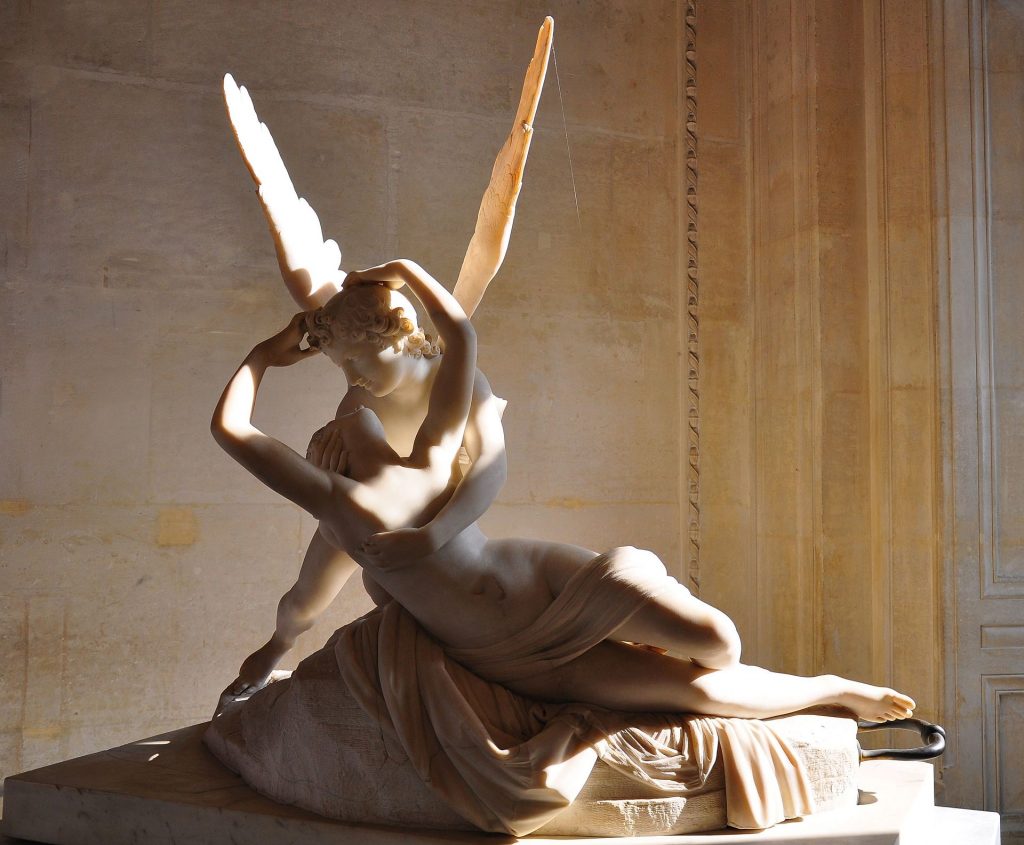
A prophecy announced that the young Princess Psyche would grow up to be more ravishingly beautiful than Aphrodite herself. The latter, furious, ordered her son, Cupid, to make Psyche fall madly in love with the ugliest being in the world. Though he was prepared to carry out his mission, instead Cupid fell in love with Psyche himself.
He sent an oracle to the young woman’s father, asking him to keep her safely hidden. Locked in a luxurious palace, Psyche received a visit from Cupid every night. However, she refrained from looking at his face, in order to avoid knowing his identity. One night, Psyche broke down and watched her sleeping lover by the light of a lantern. When a drop of hot oil falls on the young god’s skin, he flies away.
Psyche, in search of her lover, became Aphrodite’s slave. Aphrodite ordered Psyche to get a vial from Hades that she must not open. Psyche couldn’t resist and opened the bottle. Breathing in the vapors, she fell into a deadly sleep that only Cupid can break. Cupid kissed her and brought her back to life. Canova’s sculpture captures this moment. Cupid, recognizable by his quiver and arrows, rests on the rock where his beloved lies unconscious.
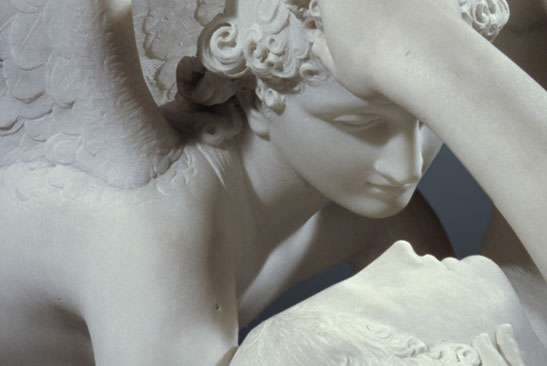
As a major sculptor at the end of the 18th century, Antonio Canova enjoyed significant recognition in Europe. Born in the province of Treviso – at the time, a possession of the Republic of Venice – he entered the Academy of Venice as a painter and sculptor. In 1779, he moved to Rome and quickly found himself at the head of a large workshop visited by many travelers.
Canova developed a unique style, influenced by his numerous studies of antique art. He produced Neoclassical art, where his characters have refined forms and calm attitudes. The artist places great importance on line and drawing, the clear contours of which are found in his sculptures. Theseus and the Minotaur, completed in 1782, is the first sculpted group in which Antonio Canova developed this style, inspired by the illustrious Torso of the Belvedere in the Vatican.
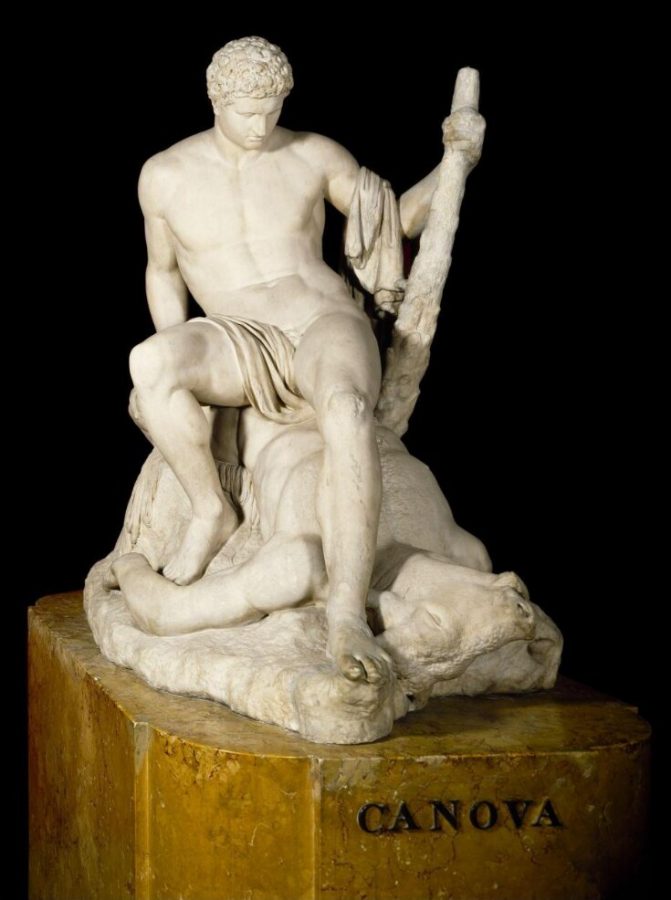
It was during his visit to Herculaneum that Canova found the inspiration to create the marble Cupid and Psyche sculpture. He copied a Roman painting discovered there, with a man crouching and leaning over a reclining woman, who stretches her arms towards him.
The marriage of these two positions allowed the sculptor to create a stable pyramid shape for his block of marble, with the legs of the figures as the base and the tip of the wing forming the top of the structure. Antonio Canova succeeded in combining a solid composition and a dynamism that gives visual strength to the work. The piece has a natural movement to it, from Cupid’s right foot to the embrace of his arms that lift Psyche, and finally to the vertical extension of his wings.

The subject of this sculpted group is ancient; however, its form considerably deviates from it. Whereas the Greeks and Romans sculpted bodies emphasizing anatomy and muscles, Canova decided to purify the body. The fluidity of the line, the grace, and the softness of the anatomy of slender bodies have replaced the ancient exaltation of the musculature. This style puts Canova’s art in the neoclassical movement of the second half of the 18th century.
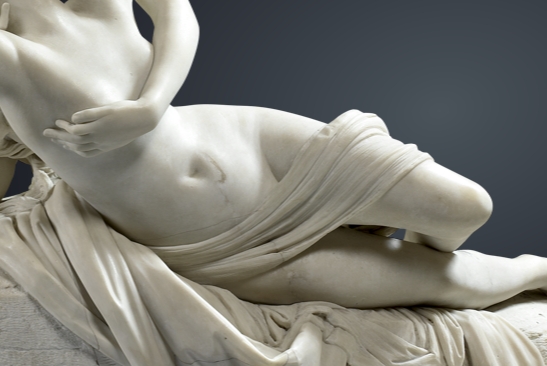
In order to best render the flexibility and grace of the lovers’ bodies, Antonio Canova used various techniques on his block of marble. The marble grain is not the same in all parts of the work; for example, compare the drape over Psyche and the rock. For both bodies, Canova used ever finer rasps, giving an impression of life and the softness of the flesh. Traces of rasps are still visible on the faces. The wings of Love are worked meticulously, allowing the golden rays of the sun to be seen through the stone.
These techniques show that Canova was, quite simply, magistral.
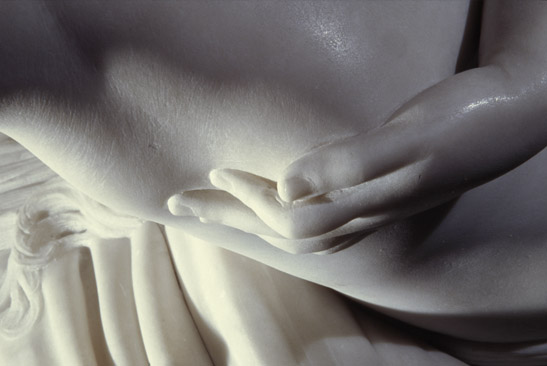
DailyArt Magazine needs your support. Every contribution, however big or small, is very valuable for our future. Thanks to it, we will be able to sustain and grow the Magazine. Thank you for your help!